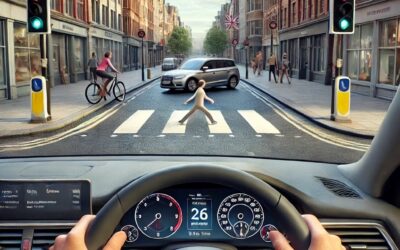Navigating the process of passing your driving test can be a challenging endeavour, but with the right preparation and mindset, success is within reach. Drawing on insights commonly shared during driving lessons, here’s a comprehensive guide to help you feel confident and capable on test day.
What Your Examiner Wants
Driving examiners focus on two critical aspects: safety and legality. If you demonstrate that you can drive safely and comply with road laws, you’re well on your way to passing. Mistakes such as parking slightly outside the bay might lead to failure, but consistent safety and adherence to rules often result in a pass. Driving schools emphasise the importance of having a systematic approach to unexpected situations. Slow down, assess the hazard, and think, “What’s the safest and most legal action I can take?”
The Structure of Your Driving Test
The practical test usually lasts between 38 and 40 minutes. During this time, your examiner will observe your driving in various conditions, including manoeuvres and independent driving. If there’s significant traffic, they might adjust the route to ensure you complete the test within the allotted time. Conversely, if conditions are unusually quiet, the route might be extended slightly.
Preparing for Test Day
- Timeliness: Arrive at the test centre 5-10 minutes early to avoid unnecessary stress.
- Local Familiarity: Spend time driving around the area 20-30 minutes beforehand to get accustomed to local roads.
- Documentation: Bring your driving licence. While your theory test pass certificate is rarely requested, it’s wise to have it.
- Comfort: Ensure your seat, mirrors, and controls are set to your liking before starting.
Key Test Components
Reading a Number Plate
Your ability to read a number plate from 20 metres will be assessed before starting the vehicle. If you wear glasses or contact lenses, ensure you have them on hand.
The “Tell Me” and “Show Me” Questions
Examiners will ask a “Tell Me” question before driving, such as explaining how to check oil levels. Later, a “Show Me” question will require demonstrating a task, like operating window controls while driving. Practice these during your driving lessons to ensure you’re comfortable multitasking safely.
Manoeuvres
You’ll perform one of four manoeuvres:
- Forward parking into a bay
- Reversing into a bay
- Parallel parking
- Pulling over on the right and reversing two car lengths
Accuracy and observations are crucial. For example, if you’re parallel parking, ensure you’re close to the curb without excessive adjustments. Frequent checks for pedestrians and other road users are essential.
Independent Driving
This segment typically involves following a satnav or road signs for 10-20 minutes. If you take a wrong turn but do so safely, it won’t fail. However, unsafe lane changes or ignoring instructions can lead to a fault.
Common Challenges and Solutions
Hazards and Slowing Down
Experienced drivers instinctively reduce speed when encountering hazards. Learners, however, may hesitate or oversteer. During driving lessons, practice responding calmly to unexpected situations. Slow down early and use the time to evaluate the safest course of action.
Dealing with Pedestrians
Rule 170 of the Highway Code requires drivers to give way to pedestrians waiting to cross at junctions. However, safety takes precedence. Avoid sudden braking if it endangers other road users. Examiners prioritise safety and may overlook minor deviations from the rule if your decision-making is sound.
Speed Management
Driving too slowly can be as problematic as speeding. On a 30-mph road, aim to drive at the limit when conditions permit. Overly cautious driving can result in a lack of progress fault.
Parked Vehicles
When passing parked cars, gauge whether there’s sufficient space for oncoming vehicles. If unsure, it’s safer to wait. Driving lessons often cover the nuances of positioning and timing when overtaking parked cars to avoid obstructing traffic.
The Role of Driving Schools
Driving schools provide a structured environment to refine your skills. Through consistent practice, learners develop the ability to navigate complex situations calmly. Instructors guide students in mastering essential techniques like hill starts, smooth gear changes, and proper observations during manoeuvres.
Final Thoughts
Passing your driving test isn’t about perfection; it’s about demonstrating competence and confidence. Driving lessons equip you with the tools to handle real-world challenges, from busy urban roads to quieter residential areas. Stay calm, trust your training, and remember that safety and legality are your guiding principles. With these tips in mind, you’re well-prepared to succeed.





0 Comments